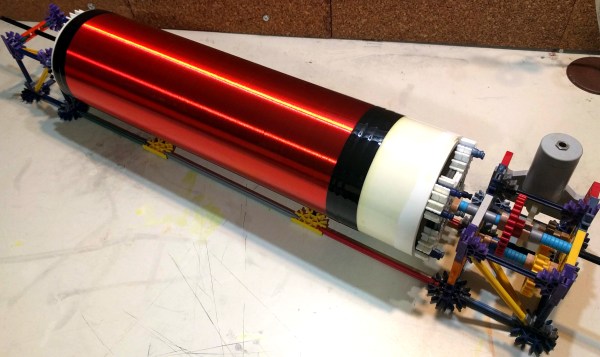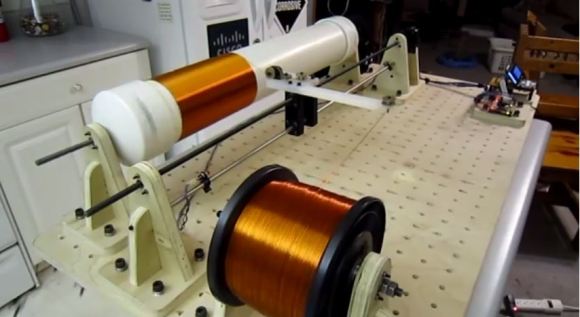Instructables user [birdycrazy] built a winding rig from a PVC pipe and a bunch of K’Nex. He had recently started a Tesla coil project and needed an efficient way to wind the secondary coil. All of the designs for DIY winding rigs he found on the Internet required parts he didn’t have or simply cost a bunch of money. Then he realized he’d been building with K’nex a lot, and why not build a tool to help him?
He ended up investing only his K’nex elements and a length of 4” PVC pipe for the project. He used a K’nex 12V motor because it plugs in rather than requiring batteries. After the coil had been completely wound he set it to rotate the assembly over a period of several days while the varnish coating dried.
[birdycrazy] has several cool K’nex projects including a couple of automatic transmissions and a differential, all made with the toy. Also be sure to check out the K’nex whiteboard plotter, the Citadel monster K’nex castle, and the K’nex skeeball table we published in the past.













